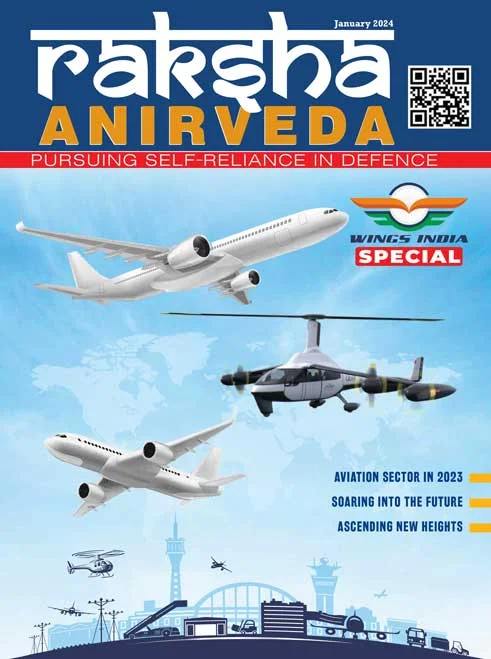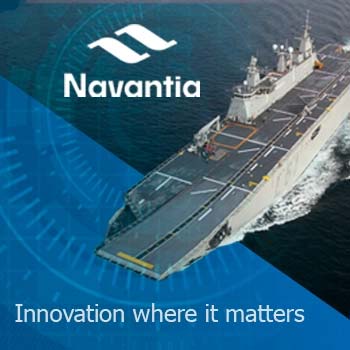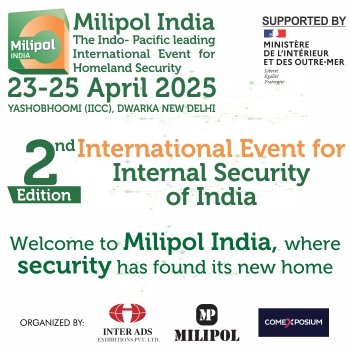The retention of ‘Big 4’ ministers – Rajnath Singh, Amit Shah, S Jaishankar, and Nirmala Sitharaman – in the key portfolios of Defence, Home Affairs, Foreign Affairs and Finance, by Prime Minister Modi has indicated that Modi 3.0 will continue with its past record in both domestic and international affairs. The PM further reaffirmed his commitment to his earlier policies by reappointing Ajit Doval as the National Security Adviser.
Let us focus on the defence, foreign affairs and homeland security challenges before the Modi 3.0 and how the PM and his cabinet colleagues can give a new direction to the already set, results-yielding policies of his two earlier terms.
India’s Defence Priorities
Rajnath Singh, a seasoned politician and a confidante of PM Modi, will continue to oversee the Defence Ministry, a critical portfolio given India’s complex geopolitical relations with its neighbours.
During the last 10 years, Indian armed forces have seen an increase in its readiness from the early 2010s when it was reported that India did not have ammunition and equipment for sustaining 20 days of full-scale war, and for some equipment even a week.
However, from 2014 to 2024 Indian armed forces have seen the introduction of five positive indigenisation lists in the last five years, which have started bearing fruit, coupled with the Indian Army’s resolve not to import any foreign ammunition from next year, barring some that are required in limited quantities.
This period also saw the army ordering 118 made-in-India Arjun Mk-1A main battle tanks (MBT), the Indian Air Force ordering an additional 97 Tejas Mk-1A jets, and the government acquiescing to the Indian Navy’s demand to induct a third aircraft carrier, buying French Rafael’s for the navy and air force, and many more path breaking decisions.
However, to full achieve the full Aatmanirbharta by 2047, these steps alone are not enough. To achieve the Viksit Bharat mission and Aatmanirbharta in defence sector, a much larger transformation needs to take.
Firstly, India’s main adversary, China, already has already operationalised integrated theatre commands, way back in February 2016, while the Indian armed forces top brass and government are always caught in a web. However, just a month back, the Indian government instructed the armed forces to set up theatre commands within a year after the new government was sworn in.
If this really happens then this would be the single largest reform in the armed forces since India’s independence, as planning and fighting jointly is critical for fighting and winning the wars in the 21st century.
Therefore, it is imperative that instead of discussions and possible delays, the new government take it head-on and push it through as fast as possible.
Secondly, the Modi 3.0 government needs to rework its Agniveer scheme, which has been under constant criticism and a source of disappointment for the youth. The Indian Army has started a survey of its key stakeholders for recommending potential changes in the scheme. Rajnath Singh, the defence minister in PM Modi’s last term, has also indicated that the government is open to changes in the scheme. But these changes need to be made at the earliest to satisfy both the public and political allies’ demands.
Thirdly, several big-ticket projects were stuck for clearance due to the elections, the biggest of which was the transfer of technology (ToT) of the General Electric F414 jet engine for Tejas Mk-2 and the selection of the next generation high-thrust engine (110 KN) for AMCA Mk-2.
As these two jet engine projects will define the future of Indian air power. Even a year’s delay in deciding on these will add further delays to the already late Tejas Mk-2 and AMCA programmes. Similarly, deals for 97 new Tejas Mk-1A jets for the air force should also be inked, as should the 307 Advanced Towed Artillery Gun System (ATAGS) 155mm artillery guns and K-9 Vajra-T 155mm self-propelled howitzers.
Similarly, the $4 billion deal for MQ-9B Guardian drones for the three armed forces should also be signed. A negotiating team for this is already in India and holding talks, as is for the 26 Rafale-M for the navy, where another team from France is in India for price negotiations.
For the Indian Navy, sanction for the third INS Vikrant-like aircraft carrier should be given so that the empty line at Cochin Shipyard Limited (CSL) starts working again and the expertise gained from manufacturing INS Vikrant is not lost.
Fourthly, the reforms for the Defence Research and Development Organisation (DRDO), as recommended by the committee formed under ex-principal scientific advisor Professor K Vijay Raghavan last year, should be implemented at the earliest.
Lastly, just as reforms for overhauling existing structures and buying new cutting-edge technology are critical for the forces, in the same way, a clearly written National Security Strategy (NSS) is equally important, or maybe even more.
Most of the critical policies of the army, air force, and navy, their future plans, and acquisitions flow out from an overarching security policy that lists out details of what India wants to achieve in the next 10 to 15 years.
Just as reforms for over-hauling existing structures and buying new cutting-edge technology are critical for the forces, in the same way, a clearly written National Security Strategy is equally important
The new NSS would also realistically change the stand which India wants to have vis-à-vis China, whether it is contended to confront in just Ladakh and in the Indian Ocean Region (IOR), as compared to taking the fight to the Chinese, in the South China Sea (SCS) close to the second island chains and in Tibet beyond the Karakoram ranges deep inside Depsang Plains, remains to be seen.
Also under Singh’s new term, the focus will likely be on engines for SU-30MKI aircraft and the procurement of Close-In Weapon Systems (CIWS), High-Power Radars (HPR), and BRAHMOS missiles, which are expected to be finalised in the first quarter.
But with the government now moving into a coalition one, and political compulsions now seeking a change in decision-making, the defence sector could see some slowdown as priorities for coalition change.
Homeland Security
Continuing with Amit Shah as the new Home Minister and Ajit Doval as his National Security Advisor (NSA) for the third consecutive time, PM Modi has shown his resolve to continue his previous homeland security policies and actions. This was shown by the implementation of the new Bharatiya Nyaya Sanhita, the Bharatiya Nagarik Suraksha Sanhita and the Bharatiya Sakshya Adhiniyam, as promised under Modi 2.0.

Foreign Policy’s Focus
India’s foreign-policy priorities are unlikely to change, as the man at the helm, S Jaishankar continues in his old post. India’s resolve to maintain its ‘Neighbourhood First Policy’ was demonstrated by the presence of seven heads of government of regional countries (those of Pakistan and China were not invited) at Modi’s swearing-in ceremony. This included the president of Maldives, where efforts to secure the departure of Indian military personnel from the country have recently strained relations, but PM Modi’s gesture to get Maldivian President Muizzu at his side at the state banquet certainly sent a positive signal, as to India’s resolve to maintain steady and cordial relations with its near neighbours.
In the emerging scenario, managing threats from China and Pakistan and maintaining cordial and fruitful relations with the US and Russia will continue to be India’s primary security concerns. In his first media interaction following the election, EAM S Jaishankar reiterated the need for stability on the India–China land border following the violent clashes that have taken place there since 2020. PM Modi took the unprecedented step of responding directly to a congratulatory message from the new Taiwanese president, Lai Ching-te, on the social-media platform X, resulting in a formal complaint by China.
Jaishankar also noted the need to find a solution to the terrorism emanating from Pakistan, saying that such activity could not be a policy of a ‘good neighbour’. He made this comment without referring to the terror attack in Jammu and Kashmir that took place as Modi was being sworn in, which killed nine people. In response to a congratulatory message from Pakistan’s leadership, Modi signalled that India’s stance on terrorism remained strong.
Moreover, the Modi-Jaishankar partnership has stood firm on avoiding strict alliances with any major power. Instead, the duo has tried to balance relations among competing global powers, which can be observed in India’s interactions with the US, Russia and China, as well as its balancing act between Israel and Middle Eastern countries.
In the coming years, the challenges are going to become even bigger for the Modi government because the rise of China and a resurgent Russia are expected to continue to undermine the US-dominated liberal global order. If India were to become a formal US ally, it would be a huge shot in the arm for President Biden. On the other hand, it’s obvious that President Putin would not like to lose an old, trusted friend in India, which relies heavily on him for its defence and energy needs.
If PM Modi succeeds in normalising relations with India’s immediate neighbours Pakistan and China, then he may emerge as the true leader of the Global South, besides adding to India’s and his own prestige and stature globally
No doubt the argument in favour of an India-US alliance looks promising for both. India wants to counter China’s growing economic and military ambitions. To achieve this PM Modi might be inclined to enter a comprehensive agreement with the US and get more rewarding economic cooperation and an umbrella security protection against any future Chinese aggression.
This argument gains traction based on India’s need for investments, technology, and semiconductor chips for its industries, in addition to advanced weapons for its military. Supporters of this school opine that India stands to gain much more from such an alliance than the US does.
With the BJP’s coalition partners having limited interest in or influence on foreign-policy issues, New Delhi is likely to maintain its policies of both strategic autonomy (a key component of which will be a focus on domestic manufacturing for key weapons and technologies) and multi-alignment, with the US as India’s principal strategic partner.
However, in essence if PM Modi would indeed like to utilise the chance offered to him by Modi 3.0, to be seen as a statesman, then he’ll have to emulate the actions of senior BJP leaders like late Mr Vajpayee and Mr Advani, who took cautious yet firm actions to normalise relations with Pakistan, taking personal initiative, and which to a certain extent was even taken by him in 2015, when he stopped unexpectedly in Lahore to wish the then Pakistani PM Nawaz Sharif on his birthday. If PM Modi succeeds in normalising relations with his immediate neighbours Pakistan and China, then he may emerge as the true leader of the Global South, besides adding to India’s and his own prestige and stature globally.
–The writer is a political commentator and media consultant, based in New Delhi. He can be contacted on www.asadmirza.in. The views expressed are of the writer and do not necessarily reflect the views of Raksha Anirveda
-The writer is a New Delhi-based senior commentator on international and strategic affairs, environmental issues, an interfaith practitioner, and a media consultant. The views expressed are personal and do not necessarily carry the views of Raksha Anirveda










